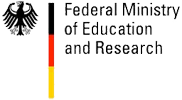| Research Mission: |
Shape analysis aims to describe either a single shape or a population of shapes in an efficient and informative way. This is a key problem in various applications, such as mesh deformation and animation, object recognition, and mesh parameterization.
In order to analyze a population of shapes, intrinsic correspondence information between the shapes is required. This group’s work focuses on automatically computing intrinsic correspondence information between non-rigid shapes and on applying this information.
Automatically computing intrinsic correspondence information between non-rigid shapes is a challenging problem because local regions on the surface are often not distinctive, especially as the surface undergoes large non-rigid deformations. Hence, to solve this problem, we assume prior knowledge about the geometry of the shapes to be registered, or about the type of deformation applied to the shapes.
Once the correspondence information is available, we may use it in applications, such as morphing one shape into another, segmenting a population of shapes automatically, or extracting meaningful information from a population of shapes. For instance, we can learn information from a population of shapes and use this information as prior knowledge to synthesize a new shape based on partial information, such as 2D image information, partial scans, or measurements. This is of particular interest since most methods for acquiring 3D data obtain only partial surface data.
In February 2015 Stefanie Wuhrer joined INRIA Grenoble Rhône-Alpes in France as a research scientist. |




